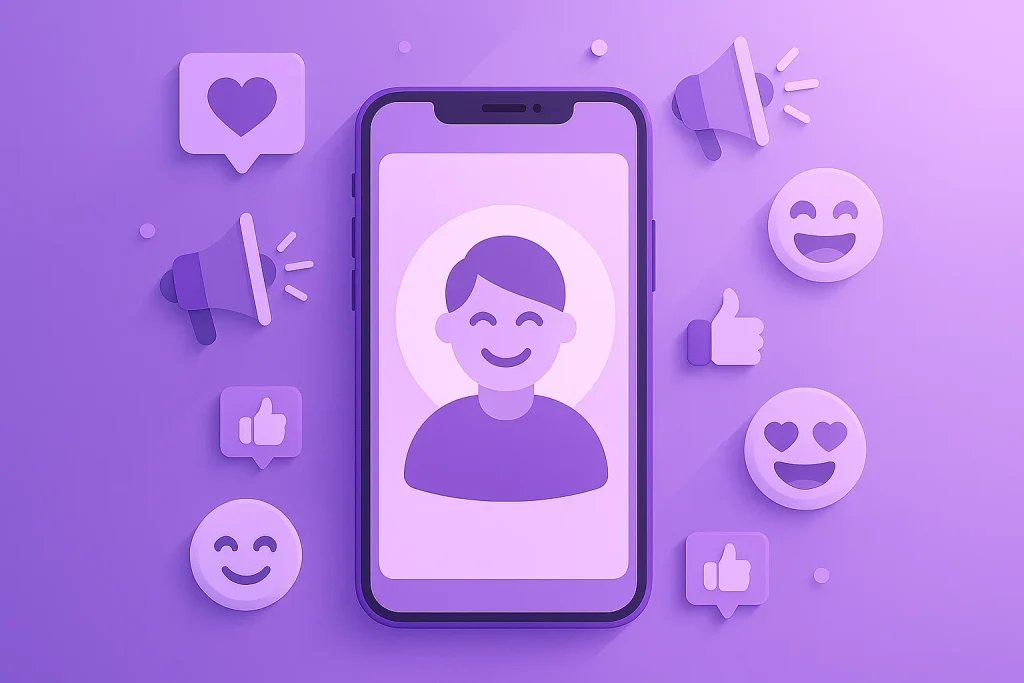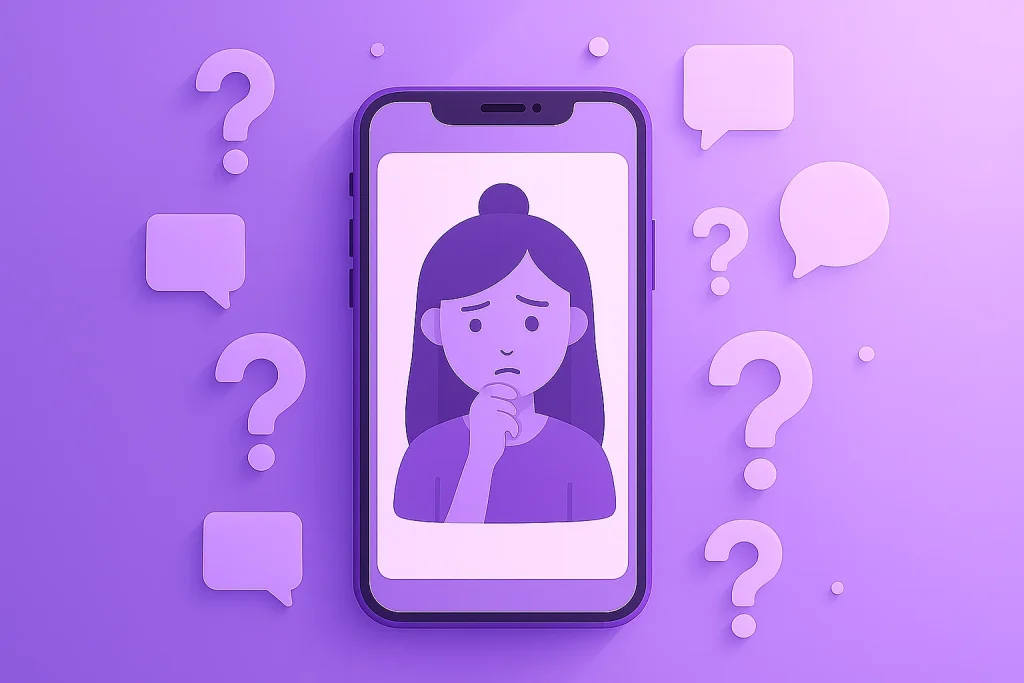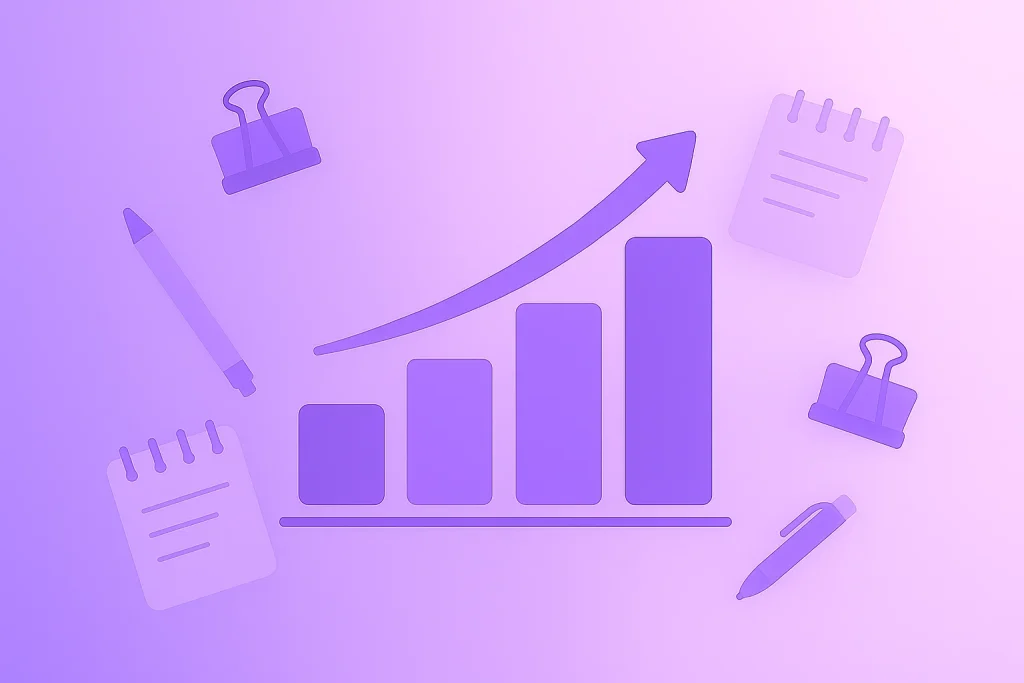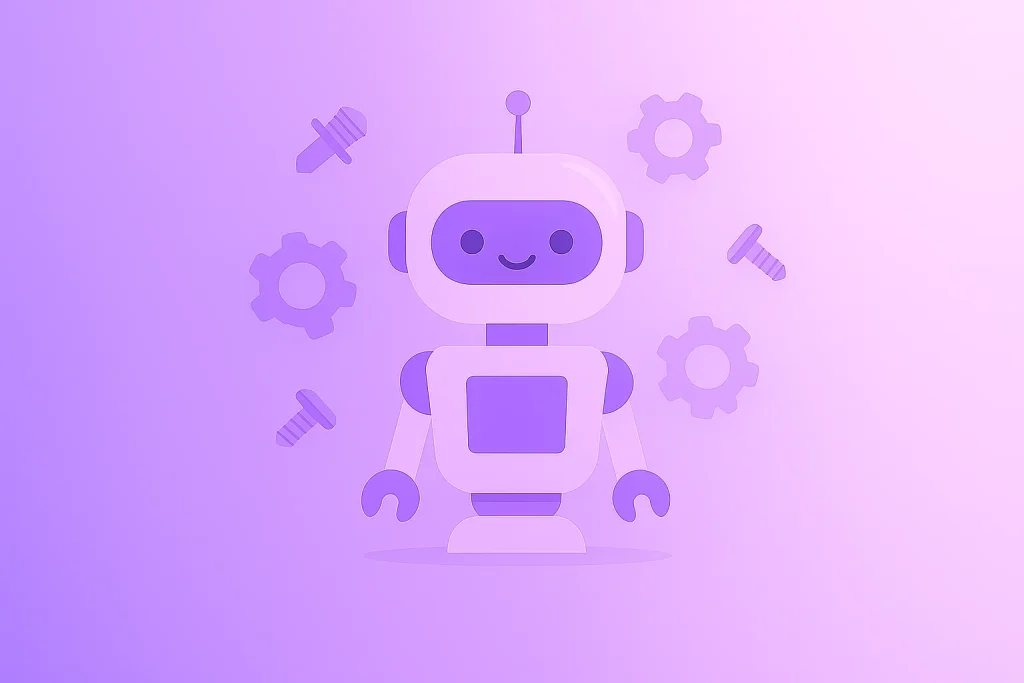Why Women Need Different Health Apps Than Men

Most fasting and nutrition advice you see online is based on one big blind spot: it comes from studies on men. Researchers have long used male participants because they’re considered “simpler” – no hormonal cycles to complicate data. The result? The majority of fasting, fitness and diet recommendations are optimized for the male body. Our physiology changes week to week. Hormones influence how we burn fat, build muscle, process food and even how we sleep. What works for men doesn’t simply scale down for women. During perimenopause and menopause, these changes become even more dramatic. No wonder so many women feel frustrated when standard fasting or workout plans don’t deliver results – they weren’t designed for us in the first place. The good news? A new generation of femtech apps is finally catching up. These apps help women sync their fasting, nutrition, fitness and even supplements with their hormonal rhythms. Here are three you’ll find in the U.S. App Store: 1. FemFast The newest player – and perhaps the most ambitious. FemFast is an AI-driven app that adapts fasting, nutrition, workouts, and even supplementation to your exact hormonal state. Unlike traditional trackers, it doesn’t just tell you when your period is due – it uses your data to make personalized recommendations that shift with your cycle or hormonal stage. Whether you’re in your follicular phase, managing PMS or navigating perimenopause, FemFast helps you make choices that actually fit your physiology. 2. Fitter Woman Designed with active women in mind, Fitter Woman aligns training and recovery with the menstrual cycle. Inspired by sports science research, it helps women avoid fatigue and injury by syncing workouts with hormonal changes. 3. Balance Created for women navigating perimenopause and menopause, Balance focuses on managing symptoms like hot flashes, mood swings and sleep disruption. It combines symptom tracking with practical lifestyle tips, helping women feel more in control during hormonal transitions. The Future of Women’s Health For too long, women have been expected to follow plans built on men’s bodies. That era is ending. With apps like FemFast, Fitter Woman and Balance women now have tools designed for our hormones, our rhythms, our health. And when advice finally matches physiology, the results speak for themselves.
Top 10 Influencer Marketing Agencies in 2025

Influencer marketing has grown into a multi-billion-dollar industry, and agencies now play a crucial role in helping brands navigate this complex landscape. From creative storytelling to performance-driven campaigns, each agency has its strengths – and limitations. Here’s our look at the 10 leading influencer marketing agencies in 2025, their positioning, and what makes them different. 1. Zorka.Agency Headquarters: Limassol, CyprusFounded: 2014 Zorka.Agency has built a reputation as one of the few influencer marketing agencies that confidently combines creativity with measurable performance. Who it’s for: Brands/Gaming Companies that need influencer marketing to perform like a performance marketing channel – predictable, measurable, and scalable. 2. Viral Nation Headquarters: CanadaFounded: 2014 A well-known global influencer agency with a strong roster of macro- and celebrity influencers. Who it’s for: Global brands that need visibility across markets and celebrity-level reach. 3. Obviously Headquarters: USAFounded: 2014 A creative-focused agency with strong roots in fashion, lifestyle, and beauty. Who it’s for: Lifestyle brands seeking creative storytelling and polished content. 4. Ubiquitous Headquarters: USAFounded: 2021 One of the fastest-growing influencer agencies, known for its speed and aggressive outreach. Who it’s for: Brands that need to move fast and tap into viral moments. 5. Goat Agency Headquarters: UKFounded: 2015 One of Europe’s most recognized influencer agencies, often associated with big stunts. Who it’s for: Brands looking for viral activations and memorable stunts. 6. The Influencer Marketing Factory Headquarters: USA & ItalyFounded: 2018 An agency that capitalized early on TikTok and Gen Z-focused campaigns. Who it’s for: Brands targeting Gen Z with TikTok-first strategies. 7. Influencer Marketing Agency (IMA) Headquarters: UKFounded: 2015 Specialists in gaming, esports, and youth culture. Who it’s for: Gaming and esports brands targeting youth audiences. 8. Upfluence Headquarters: New York, USA & Lyon, FranceFounded: 2013 Upfluence combines technology and agency services. While it started as a SaaS influencer search and analytics platform, today it also runs managed influencer campaigns for global brands. Who it’s for: E-commerce and consumer brands that want scalable influencer campaigns with strong analytics. 9. August United Headquarters: USAFounded: 2016 Known for creative storytelling campaigns. Who it’s for: Brands valuing narrative and community building. 10. Carusele Headquarters: USAFounded: 2015 Focused heavily on retail and consumer lifestyle. Who it’s for: Retail and lifestyle brands seeking visual content at scale. Comparison of Top Influencer Marketing Agencies in 2025 Agency Founded HQ Strengths Weaknesses Best for Zorka.Agency 2014 Cyprus AI-powered tools, predictive analytics, guaranteed KPIs, strong in gaming/fintech/apps Smaller vs global giants; less for “just awareness” Brands that need measurable performance & ROI-driven influencer campaigns Viral Nation 2014 Canada Global campaigns, access to celebrity influencers Corporate pace, focus on scale not precision Fortune 500 brands seeking global visibility Obviously 2014 USA Creative storytelling, beauty & lifestyle focus Weak in performance-heavy verticals Fashion, lifestyle, beauty brands Ubiquitous Influence 2021 USA Fast campaign delivery, strong TikTok presence Limited strategy depth, short-term focus Brands chasing viral trends and quick TikTok activations Goat Agency 2015 UK Bold creative stunts, strong in sports/lifestyle No KPI guarantees, more awareness-driven Brands wanting big viral activations Influencer Mktg Factory 2018 USA/Italy TikTok expertise, Gen Z knowledge Impression-focused, less on conversions Brands targeting Gen Z on TikTok IMA 2010 Netherlands Strong in fashion, luxury, lifestyle; access to top creators; global campaign expertise Focus on branding, less predictive analytics Premium & lifestyle brands seeking image-driven influencer campaigns Upfluence 2013 USA/France Large influencer database; strong analytics; SaaS + agency hybrid model Less focus on creative storytelling E-commerce & consumer brands needing scalable influencer campaigns August United 2016 USA Narrative-driven campaigns, strong brand voice Weak on performance & ROI Brands valuing storytelling and community engagement Carusele 2015 USA Retail & Instagram focus Narrow verticals, limited data-driven models Retail and consumer lifestyle brands Conclusion Influencer marketing agencies differ widely in approach: some prioritize scale and celebrity reach, others focus on creative storytelling, and a few emphasize predictable performance with AI-powered tools and guaranteed KPIs. 👉 The best agency for your brand depends on your goals:
The Future of Influencer Marketing: From Micro-Influencers to Personal Brands

Influencer marketing continues to play a key role in digital brand strategies, adapting to new technologies and shifts in consumer behavior. In 2025, several major trends will shape the industry. Micro- and Nano-Influencers Micro- and nano-influencers are gaining popularity, as their smaller but highly loyal audiences deliver strong engagement. The content they create feels authentic and relatable, making them ideal partners for brands looking to reach specific groups. Artificial Intelligence and Virtual Influencers AI innovations make it possible to create virtual influencers who can generate content continuously without significant time or resource investment. This opens new opportunities for marketers – but it’s important to balance real and virtual influencers to preserve campaign authenticity. Live Streams and Video Content Live broadcasts and interactive video formats that allow direct engagement with potential customers are becoming essential tools for boosting sales. Brands that actively leverage these formats not only increase conversions but also strengthen audience connections. Environmental and Social Initiatives Rising attention to ecological and social issues creates new opportunities for purpose-driven marketing. Brands that support ethical initiatives gain loyalty from socially conscious audiences. Influencers who promote these values help brands improve reputation – and attract new consumers. Cross-Media Formats The growth of platforms like podcasts, short videos, and interactive formats provides brands with fresh ways to engage diverse audiences. Companies that experiment across channels significantly boost visibility and consumer engagement. Analytics Influencer marketing increasingly depends on precise analytics to measure campaign effectiveness. Advanced tracking tools help brands optimize strategies, maximize ROI, and identify which influencers resonate best with each target audience. Influencers as Brand Creators Influencers are evolving from being brand ambassadors to becoming brand owners themselves. Collaborations with companies and the launch of personal product lines allow influencers to grow businesses and build stronger loyalty among their followers. Transparency The demand for transparency in advertising and sponsored content is rising. Both brands and influencers must clearly disclose sponsorships to maintain audience trust. Transparency fosters stronger, long-term relationships between brands and their communities. Conclusion In 2025, influencer marketing is becoming even more integrated into brand strategies – with a focus on technology, sustainability, and deeper audience engagement. Brands that adapt to these shifts will be best positioned for success in the digital landscape.
How to Choose the Right Influencer for Your Brand

Not all influencers are equally effective. Some can influence thousands, while others work in smaller niches but with maximum impact. Nano- and micro-influencers often have a more engaged audience – even if they have fewer followers. Mega-influencers, on the other hand, provide celebrity-level reach – but that doesn’t always translate into sales. The choice depends on your goals and budget. How to Find “Your” Influencer? Start with understanding your own audience: who they are, what they’re interested in, which social platforms they use. Then – check how closely the influencer’s audience overlaps with yours. Don’t chase popularity. It’s better to work with those who have authority in your niche than to try reaching “everyone at once.” Pay attention to content style: does it match your brand’s aesthetic? Does advertising look organic in their feed? Remember, the influencer will be the face of your brand – it’s important that this face suits you. Key Metrics and the Cost Factor Reach is not everything. The main thing is engagement – comments, likes, saves, reactions. A healthy engagement rate is 1–5%. Quite often, micro-influencers deliver the best results. As for cost – each influencer has their own rates depending on format, platform, reach, and experience. To make negotiations productive, send a clear brief with short brand info, campaign description, budget, and deadlines. This looks professional – and saves time for both sides. Which Platform to Choose? It all depends on your product and goals. Instagram works well for visual content, TikTok – for viral videos, YouTube – for in-depth reviews. If you’re targeting a local or older audience – Facebook can come in handy. Ideally, use a mix of platforms to amplify the impact. Campaign Ideas: Beyond Advertising Working with an influencer is more than just a post. It could be an unboxing, a review, a contest, a series of posts, or even a multi-influencer campaign. The main thing – integration should look natural. That’s when trust = results. An influencer is not just a sales channel. They are a partner in communication. To make a campaign work, you need strategy, research, and a bit of intuition. Choose not the loudest name – but the person who truly resonates with your brand. Because in an age of advertising overload, the winner is the one who stays authentic.
Influencer Marketing for Non-Profit Organizations: Opportunities and Challenges

In today’s world, where social media shapes public opinion, influencers have become powerful communication bridges between brands and communities. Non-profit organizations are no exception. To strengthen the impact of their initiatives, expand volunteer networks, and communicate their mission more effectively, NGOs are increasingly turning to influencer marketing. This approach opens new horizons but also comes with challenges. What Is Influencer Marketing and Why Is It Important for the Non-Profit Sector? Influencer marketing is collaboration with content creators who have a loyal audience on social media. They can be micro- or macro-influencers, but the key factor is their authenticity and the trust they inspire in their followers. For non-profits, partnering with opinion leaders is a way to reach a broader audience, deliver important messages in a personal form, and motivate action—whether it’s making a donation, joining as a volunteer, or sharing information. Research shows that one in four donors feels motivated to contribute after seeing social media content. That’s a strong argument for incorporating influencer strategies into NGO communications. Benefits of Influencer Marketing for Non-Profits Raising Mission AwarenessThe main “product” of a non-profit is its mission. Collaboration with influencers helps this mission reach people who may not have heard of the initiative before. Campaigns are especially effective when influencers genuinely share their connection to the cause, creating an emotional bond with the audience. Access to Target AudiencesIn the crowded digital marketing landscape, attention is scarce. Influencers allow NGOs to reach established communities that already share their values. Strengthening Trust in the BrandAn influencer acts as an ambassador for the organization. Their recommendation is perceived as a real-life endorsement—one of the strongest drivers of human behavior. Creating High-Quality ContentInfluencers bring creativity and unique perspectives that resonate with their audiences. Partnering with them results in content that is not only visually appealing but also emotionally engaging and authentic. Improving SEO and Online VisibilityInfluencer-generated content spreads widely across social media and improves the organization’s online visibility. Backlinks, mentions in blogs, and shares help strengthen Google rankings and increase organic reach. Challenges to Consider Despite clear advantages, influencer marketing is not a magic wand for NGOs. It requires a thoughtful, strategic approach. Key challenges include: Conclusion Influencer marketing is not about star power—it’s about authenticity. For non-profits, it’s an opportunity to amplify their mission through voices trusted by thousands. But this tool only works when grounded in sincerity, strategic planning, and a clear understanding of the audience. The world is changing—and so is communication. For NGOs willing to go beyond traditional approaches and embrace new forms of engagement, influencer marketing can become not just a trend but a true driving force for change.
How to Measure the Effectiveness of Influencer Campaigns: Metrics and Tools

Influencer marketing has become an integral part of many brands’ strategies, as the ability to influence consumer opinions and behavior makes it a powerful tool. However, simply launching a campaign with popular influencers is not enough—you need to clearly measure its effectiveness to ensure that investments deliver the desired results. For this, it is essential to track various metrics that not only help evaluate outcomes but also improve future campaigns. Key Metrics for Evaluating Influencer Campaigns Reach and ImpressionsOne of the first metrics to consider is reach—the number of people who saw the content. This shows how widely the message was distributed. However, reach alone does not give a complete picture of effectiveness, as it’s equally important to know how many people interacted with the content. Engagement and InteractionsAnother crucial metric is the number of interactions: likes, comments, shares, and so on. But quality matters just as much as quantity. Genuine interest in a brand is often reflected in meaningful comments, discussions, or reposts—not just a quick “like.” These provide deeper insight into audience engagement and emotional response. ConversionsThe ultimate goal of any marketing campaign is to achieve concrete business results, such as subscriptions, sales, or other actions. Measuring conversions—the actual actions taken as a result of the campaign—allows brands to understand how successful an influencer campaign was in terms of commercial outcomes. Tools for Measuring Effectiveness Google AnalyticsThis tool helps evaluate how much traffic the campaign generated and what actions users took after clicking through influencer content. It provides real-time data, showing how many visitors came to the site, how long they stayed, and how many completed a purchase. Social Media AnalyticsPlatforms like Instagram, TikTok, and YouTube have built-in analytics that provide statistics on reach, engagement, audience demographics, and more. Marketers can use these insights to compare which content performs better and adjust strategies on the fly. CRM SystemsMany brands use CRM systems to track customer behavior after they land on the website. These systems help determine how many customers brought in by influencers became repeat buyers or long-term clients. Evaluating Campaigns Based on Goals The effectiveness of an influencer campaign should always be measured against its specific objectives: Conclusions and Recommendations Measuring influencer campaign effectiveness is a complex, multi-dimensional process that requires careful analysis of numerous metrics. Marketers should apply a combined strategy, using different tools and data points. This makes campaign evaluation more accurate, highlights strengths and weaknesses, and ultimately helps optimize strategies for better results.
The Role of Artificial Intelligence in Performance Marketing

Artificial Intelligence (AI) plays a crucial role in transforming marketing strategies, and its impact on performance marketing is only growing. From campaign optimization to improving customer interactions, AI is becoming an integral part of modern marketing processes. Let’s look at the key aspects of its application and influence in this field. Adapting AI in Marketing: Why Is It Important? AI is rapidly finding its place across industries due to its ability to optimize routine tasks and operations. In a fast-changing and highly competitive market, companies that invest in AI technologies stay one step ahead by using these tools for efficiency. For marketers, this means not only automating processes but also gaining actionable insights to make informed decisions—allowing for precise campaign adjustments, better audience targeting, and effective budget management. Generative AI and Content Creation AI has revolutionized content creation. Generative algorithms can produce personalized texts, videos, and other materials tailored to specific audiences. According to recent studies, around 40% of businesses already use generative AI for marketing content creation. This technology significantly reduces content production costs while increasing relevance. However, as AI-generated content becomes more common, a new challenge arises: how to ensure uniqueness and differentiation? The answer lies in balancing efficiency with creativity. Maintaining the human touch is essential so that content feels not only automated but also authentic and engaging. AI as a Campaign Assistant Through predictive analytics and outcome modeling, marketers can forecast campaign performance and assess key metrics such as Cost-to-Revenue Ratio (CRR) and Return on Ad Spend (ROAS). Predictive models combined with Marketing Mix Modeling (MMM) provide detailed and accurate insights into the effectiveness of different channels and strategies, helping fine-tune campaigns for maximum impact. AI and Strategy AI is actively reshaping approaches to search engine optimization (SEO) and social media marketing. It drives new search formats, including voice and visual search. Consumers increasingly use these methods to find products and services, requiring marketers to optimize content for new platforms. Social platforms like TikTok, Instagram, and Pinterest continue to grow in popularity. As a result, brands must adapt strategies to new algorithms and leverage AI for better results. Consumers expect personalized and seamless experiences, making AI a critical tool for delivering such personalization. Ethics of AI in Marketing The rise of AI introduces new challenges around data privacy and ethics. Regulations such as the EU AI Act impose strict requirements for data protection and transparency. Brands that fail to adapt may face penalties or lose consumer trust. Conclusion: AI as the Foundation of Future Performance Marketing AI is already driving radical change in performance marketing. From forecasting campaign results to generating personalized content, AI opens new horizons for marketers. To succeed, companies must continually adapt strategies, adopt innovative solutions, and uphold ethical standards. Marketers who integrate AI effectively into their strategies will enhance campaign performance and secure market leadership. In the future, AI will not only be a tool for automation but also a strategic partner in achieving business goals. Leave a Reply

